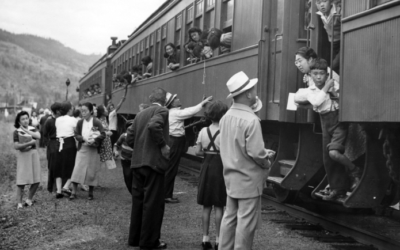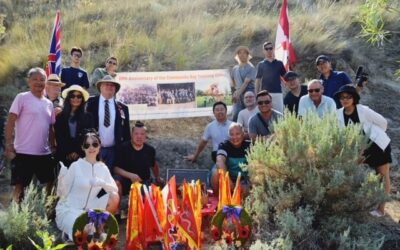August 2023 marks the 20th anniversary of the Okanagan Mountain Fire near Kelowna. At the time, many large fires in British Columbia were raging, which overwhelmed the provincial forestry services and precipitated a request for “aid to civil power” to the federal government. They formed Operation PEREGRINE. The British Columbia Dragoons (BCD), the Canadian Army – Reserve unit based in the Okanagan, became the headquarters for Task Force 2, which was responsible for the Okanagan Mountain Fire support, as well as for providing personnel for the other four Task Forces (TFs) deployed in BC.
Who commanded them? Brigadier General Ivan Fenton was the Joint Task Force Commander, while Lieutenant Colonel Denis Cyr was the Officer Commanding Task Force 2, and Captain Richard Erland was Operations Officer Op PEREGRINE TF2.
What did the BC Dragoons do? They established and staffed the task force headquarters in Vernon and Kelowna, liaised with local and provincial agencies, and maintained radio communication logs 24/7 for coordinating firefighting companies with local agencies. They also administered Camp Kelowna operations, including administrative support to incoming and outgoing Regular and Reserve personnel, provided an honour guard for Gov. General Clarkson and served on other TFs. BCD members also spent 14 days actively fighting the fire.
Where did they do this work? At the Brigadier Murphy Armoury in Vernon, the Brigadier Angle Armoury in Kelowna, and the temporary tent camp at Kelowna’s Apple Bowl stadium/Parkinson Recreation Centre sports fields within Task Force 2 (BCD).
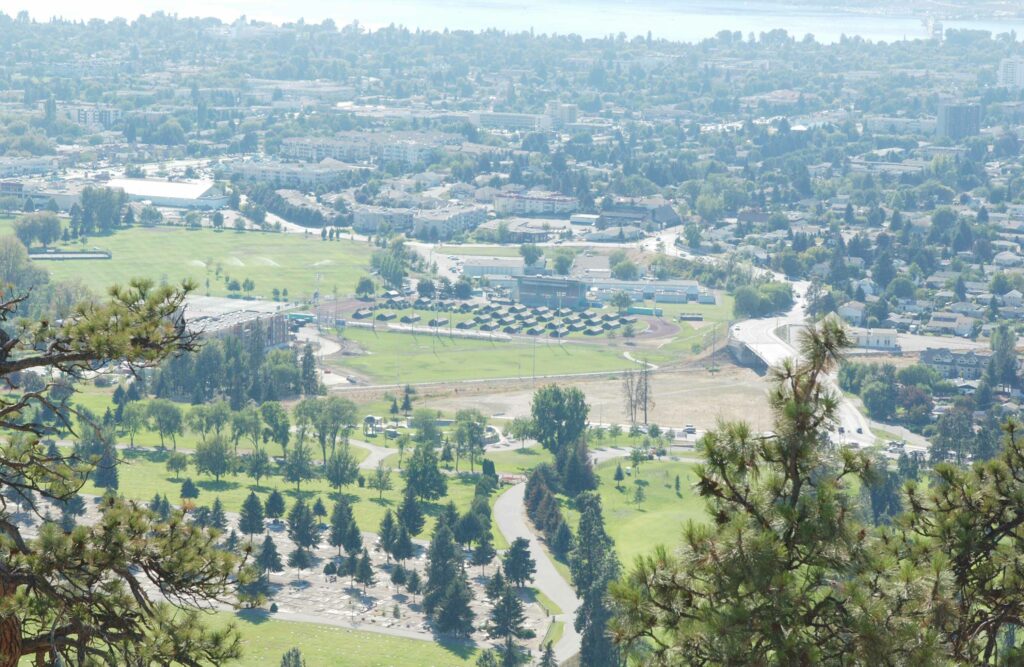
LG2003.005.03A
When: August 2 to September 31, from the initial request for support for the Barriere-McLure fires to the Ok Mountain Park, Vaseux Lake, McGillivary, and Kuskanook fires.
Why were they needed? Centralized control of over 160 soldiers and equipment in the field was required to maximize their support to the Kelowna Fire Department and BC Forestry Service as they battled the structural fires that destroyed 139 homes in the Kettle Valley/Okanagan Mission areas. In total, over 1,600 personnel in 13 companies of firefighting troops from across Canada rotated through TF2 from August 22 to September 15.
Firefighting Companies all trained for one day in Vernon, covering theory, tactics, and safety measures in class, plus line procedures and mopping up in field. They were on duty 12 to 16 hours a day for 14 days with two days off per rotation. They risked dehydration, smoke and toxic fume inhalation, falls and scrapes, fire reversal or envelopment. Companies were supported by Regular Force medical, admin, transport, food and lodging personnel.
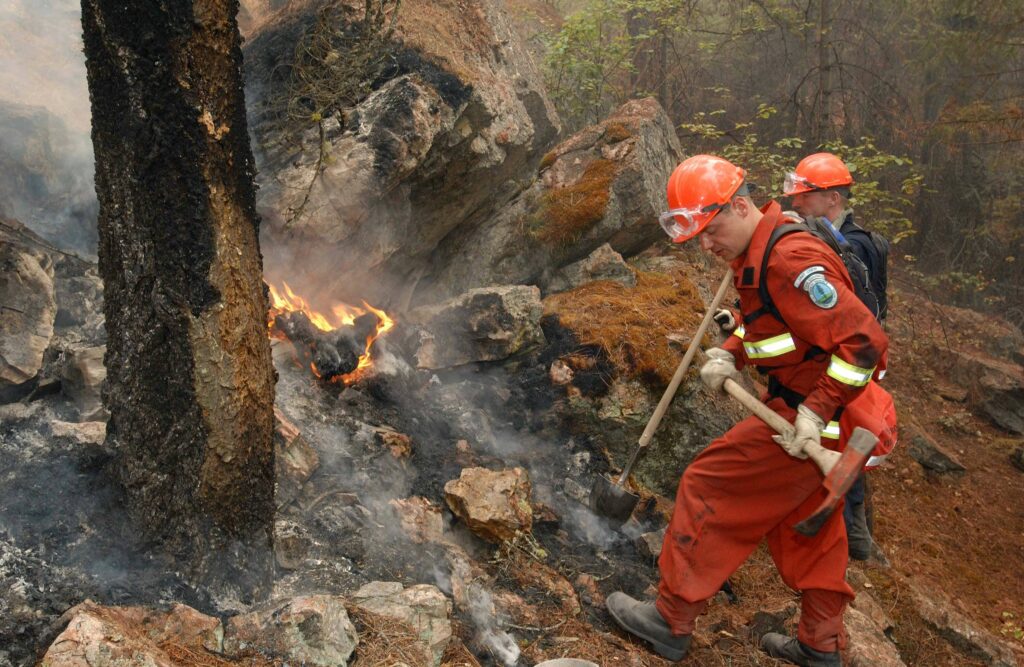
Digging up hot spots
LG2003.001.044a
How was this achieved? During Operation PEREGRINE, the Canadian Armed Forces deployed over 2,600 Army, Navy, and Air Force personnel from both the Regular Force and the Reserves, supporting the firefighting effort. Some Regular Force members were designated for domestic ops while others were re-tasked. Reservists voluntarily took time off from work, studies, or vacation.
The daily routine saw an afternoon operations coordination conference involving the BC Forestry Service, Kelowna Fire Department and Ops Officer TF 2. From this preliminary meeting, plans were produced for the next day’s operation. In the evening, a coordination conference was held by the Forestry Service Incident Commander, Chief of Kelowna Fire Department, and OC TF 2 (BCD).
Based on the information and decisions of the coordination conferences, the TF plans were finalized, and resources were ordered/reallocated. Later in the evening, LCol Cyr held a TF Orders Group with the TF Company Commanders. Early the following day, Firefighting Companies deployed either by road or helicopter to their designated areas of operation.
Daily, at 11 AM, a press conference was convened, and all agencies involved in the operation provided situation reports on their efforts and answered questions. These press conferences were televised nationally and, for a period, internationally. The Joint TF Commander, Brigadier General Ivan Fenton, held a weekly coordination conference.
BC Dragoon Sergeant Rick Galitzine, of Kelowna, served on the fire line.
“I was Platoon Warrant Officer for 5 Platoon (Sections 9 & 10), B Coy, 39 Canadian Brigade Group, TF 2 from 21 Aug to 05 Sep. Platoon Orbat [Order of Battle] was one Capt, three Sgt, one Mcpl, eight Cpl, 14 Pte, plus two Cpl (Med) and two Pte (Dvr) for 31 total. These numbers varied slightly depending on the type of vehicle we were assigned, for example, the Heavy Logistics Vehicle Wheeled could carry the entire Platoon in a single vehicle, 2 ½ tons required two vehicles.
Many of the Platoon were either BCD or BC Regiment, and we arrived in Kelowna from our Fire Training in Vernon at approximately 0200 hours, Sat 23 Aug. This was in the middle of the firestorm that destroyed 139 homes in the Kettle Valley/Mission area.
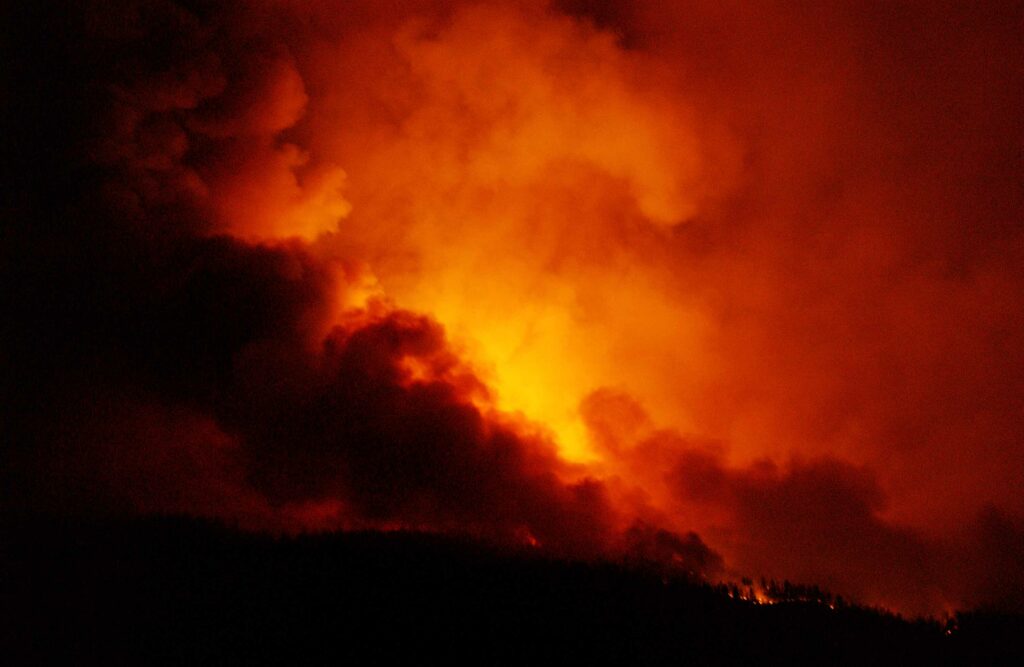
LG2003.0034a
We remained working in that area for three days, then were assigned to the area of Power Station in southeast Kelowna for two days. On the 28th through to the 30th were working at the south end of Lakeshore Rd. On the 31st, we departed the Apple Bowl for the Vaseux Lake fire, staying at the City Park in Okanagan Falls until 05 Sep. We returned to Vernon and were stood down there on 05 Sep 03. “
The City of Kelowna honoured the BCDs by naming the regiment as a co-recipient of the Anita Tozer Memorial Award, which is given in recognition of an extraordinary and positive contribution to the quality of life in Kelowna.
Major Richard Erland, then a Captain-Operations Officer of the BCD, was awarded the Meritorious Service Medal (MSM) for his service during the operation. His citation reads:
“In August 2003, Major Erland, then Capt, served with tireless dedication during the City of Kelowna firestorm and follow-up periods of threat to the city. As the Operation PEREGRINE Task Force 2 operations officer, he displayed outstanding leadership and provided inspiration throughout the demanding operation. Maj Erland’s organizational abilities and professional conduct during a highly stressful period were instrumental in maintaining a sense of balance in the face of chaos and reflected highly on the Canadian Forces and on Canada.”
Other members of the BCD and units attached to TF 2(BCD) were awarded Chief of Defence Staff, Chief of Land Staff, and Commander-Land Force Western Area Citations.
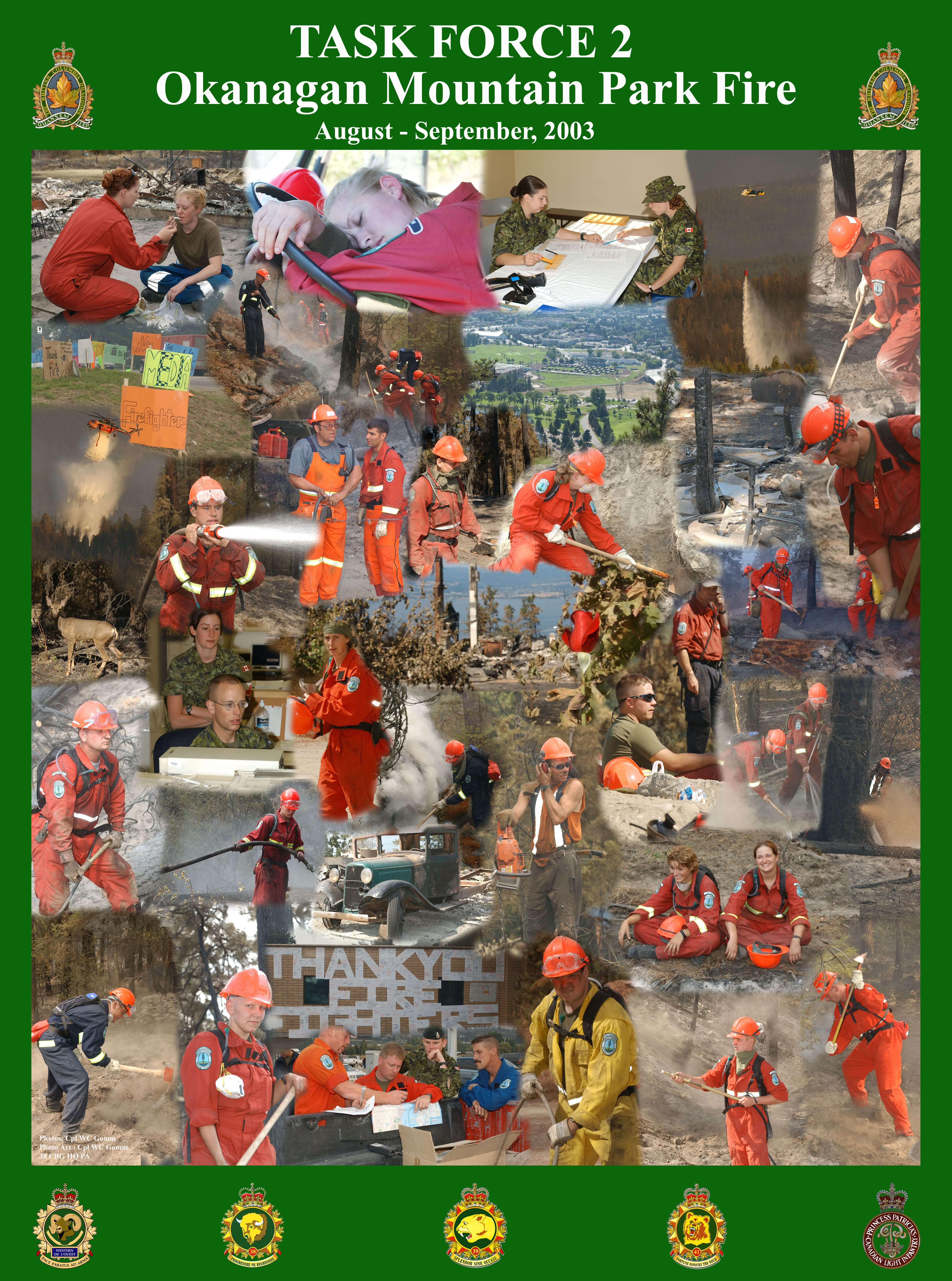
Task Force 2 poster
Cpl W.C. Gomm, 38 CBG HQ PA 2003
Canada continues to experience large interface forest fires near towns and villages and huge wildfires in remote parts of the country. The Canadian Armed Forces continue to provide support to provincial forestry services to battle these firestorms, drawing from Regular Force and Reserve Force personnel and various resources while straining to maintain readiness for deployment to defend Canada abroad. We see the legacy of the fires on our mountainsides as the bare sections gradually rejuvenate with new growth and natural habitats.

